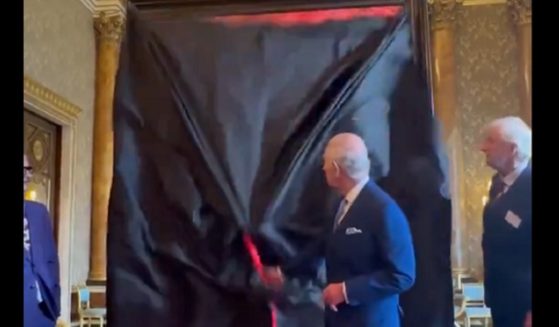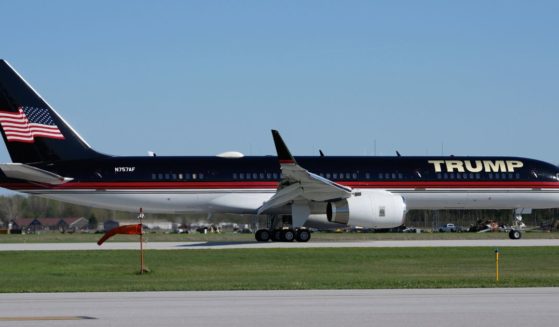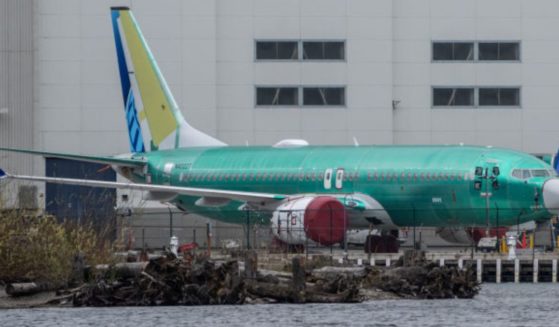Lone Veteran Marks D-Day in Normandy Amid 2nd Straight Year of Travel Restrictions
In a small Normandy town where paratroopers landed in the early hours of D-Day, applause broke the silence to honor Charles Shay. He was the only veteran attending a ceremony in Carentan commemorating the 77th anniversary of the invasion that helped bring an end to World War II.
For the second straight year, D-Day commemorations are taking place amid travel restrictions that have prevented veterans and families of fallen soldiers from the U.S., Britain and other Allied countries from making the trip to France. Only a few officials were allowed exceptions.
Shay, who now lives in Normandy, was a 19-year-old U.S. Army medic when he landed on Omaha Beach on June 6, 1944. Today, he recalls the “many good friends” he lost on the battlefield.
Under a bright sun, the 96-year-old from Indian Island, Maine, stood steadily while the anthems of the Allied countries were played on Friday in front of the D-Day monument in Carentan.
Shay regretted that the pandemic “is interrupting everything.” He was expected to be the sole veteran at Sunday’s anniversary day ceremony at the Normandy American Cemetery of Colleville-sur-Mer.
“We have no visitors coming to France this year for two years now. And I hope it will be over soon,” he told The Associated Press in Carentan.
Shay’s presence is all the more poignant as the number of survivors of the historic battle dwindles. Only one veteran now remains from the French commando unit that joined American, British, Canadian and other Allied troops in storming Normandy’s beaches.
While France is planning to open up to vaccinated visitors starting next week, that comes too late for the D-Day anniversary. So for the second year in a row, most public commemoration events have been canceled.
Local residents, however, are coming out in greater numbers than last year, as France started lifting its internal virus restrictions last month.
Some French and a few other World War II history enthusiasts from neighboring European countries gathered in Normandy.
Driving restored jeeps, dressed in old uniforms or eating at the newly reopened restaurants, they’re keeping alive the memory of June 6, 1944.
“In France, people who remember these men, they kept them close to their heart,” Shay said. “And they remember what they did for them. And I don’t think the French people will ever forget.”
On Saturday morning, people in dozens of World War II-era vehicles gathered in a field in Colleville-Montgomery to parade down the nearby roads to the sounds of a pipe band. Residents, some waving French and American flags, came to watch.
Henri-Jean Renaud, 86, remembers D-Day like it was yesterday.
He was a young boy and was hidden in his family home in Sainte-Mere-Eglise when more than 800 planes bringing U.S. paratroopers flew over the town while German soldiers fired at them with machine guns.
Describing an “incredible noise” followed by silence, he recalls crossing the town’s central square on the morning of June 6. He remembers seeing one dead U.S. paratrooper stuck in a tree that is still standing by the town’s church.
“I came here hundreds of times. The first thing I do is look at that tree,” he said.
“That’s always to that young guy that I’m thinking of. He was told, ‘You’re going to jump in the middle of the night in a country you don’t know.’ … He died and his feet never touched [French] soil, and that is very moving to me.”
More than 12,000 soldiers were buried temporarily in Sainte-Mere-Eglise during and after the Battle of Normandy, before being moved to their final resting place.
In the years following the war, local people were allowed to go to the cemeteries. “Often, people had adopted a grave because they had seen a name they liked. … They were a bit like friends,” Renaud said.
“Some, especially at the beginning when there were no coffins yet, had been buried in the ground. They had become the Normandy soil,” he added.
On D-Day itself, more than 150,000 Allied troops landed on beaches codenamed Omaha, Utah, Juno, Sword and Gold, carried by 7,000 boats. The Battle of Normandy hastened Germany’s defeat, which came less than a year later.
Still, that single day cost the lives of 4,414 Allied troops, 2,501 of them Americans. More than 5,000 were injured. On the German side, several thousand were killed or wounded.
This year, Col. Kevin Sharp came with a delegation of three other U.S. military officers from the 101st Airborne Division to attend Friday’s commemoration in Carentan — the same division that took part in the D-Day operations there.
The U.S. military “really values the legacy of the soldiers and the paratroopers who came before us,” he told the AP. “It was important enough to send a small representation here to ensure that our appreciation for their sacrifices is made known.”
The Western Journal has reviewed this Associated Press story and may have altered it prior to publication to ensure that it meets our editorial standards.
Truth and Accuracy
We are committed to truth and accuracy in all of our journalism. Read our editorial standards.












